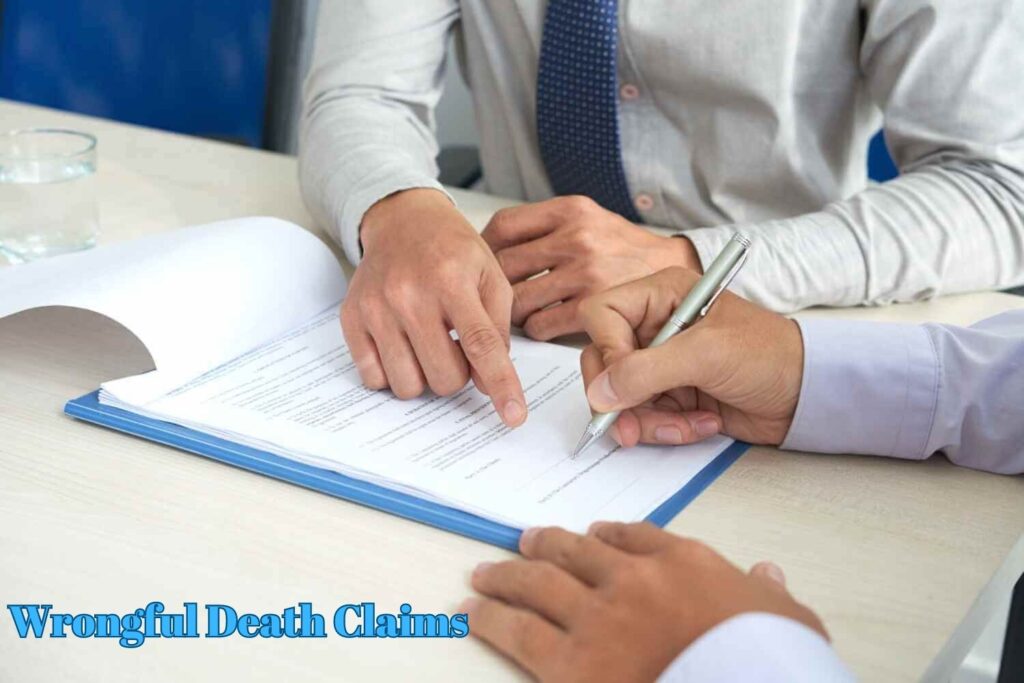Understanding Wrongful Death Claims: A Guide from Expert Attorneys

Understanding Wrongful Death Claims: A Guide from Expert Attorneys
Losing a loved one is always a heartbreaking experience, but when their death is a result of someone else’s negligence or wrongdoing, it becomes even more devastating. Wrongful death claims are legal actions that aim to provide justice and compensation to the surviving family members of the deceased. In this guide, we will delve into the intricacies of wrongful death claims, walking you through the essential aspects and considerations. Our expert attorneys have compiled this comprehensive guide to help you understand the process and make informed decisions during this challenging time.
Table of Contents
- Introduction
- Defining Wrongful Death
- Common Scenarios Leading to Wrongful Death
- Who Can File a Wrongful Death Claim?
- Proving Negligence or Liability
- Types of Damages in Wrongful Death Claims
- Statute of Limitations
- The Wrongful Death Claim Process
- Filing the Lawsuit
- Discovery Phase
- Settlement or Trial
- Working with an Expert Wrongful Death Attorney
- Finding the Right Attorney
- Initial Consultation
- Building Your Case
- FAQs About Wrongful Death Claims
- Understanding Wrongful Death vs. Criminal Charges
- Coping with the Emotional Impact
- The Importance of Seeking Closure
- Raising Awareness for Preventable Deaths
- Conclusion
Introduction
The sudden loss of a family member or loved one can be overwhelming, especially if their death was avoidable. Wrongful death claims exist to hold responsible parties accountable for their actions and provide financial support to the surviving family members.
Defining Wrongful Death
Wrongful death refers to a situation in which an individual’s death is caused by the negligent, reckless, or intentional actions of another party. This could involve medical malpractice, car accidents, workplace accidents, product defects, and more.
Common Scenarios Leading to Wrongful Death
Wrongful death can occur in various situations, including but not limited to:
- Medical errors
- Car, motorcycle, or truck accidents
- Workplace accidents
- Defective products
- Criminal acts
Who Can File a Wrongful Death Claim?
The laws regarding who can file a wrongful death claim vary by jurisdiction. Generally, immediate family members such as spouses, children, and parents can file the claim. In some cases, distant family members or dependents may also be eligible.
Proving Negligence or Liability
To succeed in a wrongful death claim, it’s crucial to establish negligence or liability on the part of the defendant. This involves proving that the defendant owed a duty of care to the deceased, breached that duty, and directly caused the death.
Types of Damages in Wrongful Death Claims
Damages in wrongful death claims can be both economic and non-economic. Economic damages include medical expenses, funeral costs, and lost financial support. Non-economic damages encompass emotional pain, suffering, and loss of companionship.
Statute of Limitations
Wrongful death claims are subject to a statute of limitations, which dictates the timeframe within which a claim must be filed. Missing this deadline can result in the forfeiture of the right to pursue a claim.
The Wrongful Death Claim Process
Filing a wrongful death claim involves several stages:
- Filing the Lawsuit: The process begins by officially filing the lawsuit against the responsible parties.
- Discovery Phase: Both sides gather evidence, interview witnesses, and build their cases.
- Settlement or Trial: The parties may reach a settlement or proceed to trial, where a jury determines the outcome.
Working with an Expert Wrongful Death Attorney
An experienced attorney can be invaluable during this process:
- Finding the Right Attorney: Look for attorneys with expertise in wrongful death cases.
- Initial Consultation: Discuss the details of your case and understand your legal options.
- Building Your Case: Your attorney will gather evidence, consult experts, and prepare a strong case on your behalf.
FAQs About Wrongful Death Claims
- What is the difference between a wrongful death claim and a criminal case?
- Can distant relatives file for wrongful death?
- What damages can be claimed in a wrongful death case?
- How long do I have to file a wrongful death claim?
- What if the responsible party is deceased?
Understanding Wrongful Death vs. Criminal Charges
It’s important to note that a wrongful death claim is a civil action seeking compensation, while criminal charges are brought by the state and can result in penalties such as imprisonment.
Coping with the Emotional Impact
Losing a loved one in such circumstances can lead to a range of emotions, including anger, grief, and confusion. Seeking counseling or support groups can be beneficial during this difficult time.
The Importance of Seeking Closure
A wrongful death claim not only seeks financial compensation but also provides a sense of closure for the family. Holding the responsible party accountable can bring a degree of justice and peace.
Raising Awareness for Preventable Deaths
Many organizations and initiatives focus on raising awareness about preventable deaths, advocating for safer practices and policies to avoid similar tragedies in the future.
Conclusion
Wrongful death claims are a way to navigate the challenging aftermath of a loved one’s untimely death due to negligence or wrongdoing. By understanding the intricacies of the process and seeking the guidance of expert attorneys, you can pursue justice and compensation while honoring the memory of your loved one.
